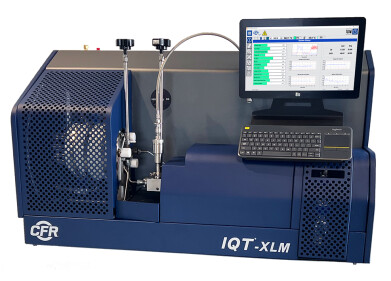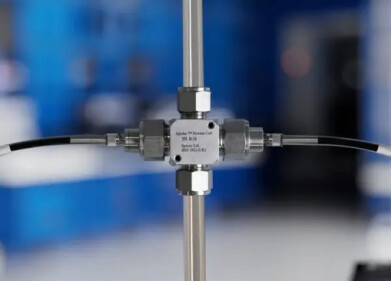-

-
 Image A: Calibration
Image A: Calibration -
 Image B: Preceision
Image B: Preceision -
 Image C: Detection Limit
Image C: Detection Limit
Analytical Instrumentation
Measurement of Manganese in Gasoline by the Rigaku NEX QC+ EDXRF Analyser
Jan 17 2018
Methylcyclopentadienyl manganese tricarbonyl (called MMT or MCMT) is an anti-knock agent added to motor gasoline and Avgas (aviation gasoline) to boost octane rating, replacing tetraethyl lead (TEL) in many regions of the world. In motor gasoline the Mn content is typically between 50-500 mg/kg, and can be as high as 3000 mg/kg (approximately 3 g/L) in Avgas. Reliably characterising the Mn content of gasoline ensure optimum engine performance based on the engine’s compression ratio and other geometrical and mechanical operating conditions. To meet the needs of the industry, Rigaku offers NEX QC+, a simple and versatile benchtop EDXRF analyser for the analysis of manganese in gasoline.
The method described here demonstrates the measurement of manganese (Mn) in gasoline by the empirical approach using the Rigaku NEX QC+ high-resolution benchtop EDXRF analyser.
Instrument
The Rigaku NEX QC+ spectrometer is designed for demanding applications, or for situations where analysis time or sample throughput is critical. A silicon drift detector (SDD) affords extremely high count rate capability with excellent spectral resolution, enabling NEX QC+ to deliver the highest precision analytical results in the shortest possible measurement times.
Specifically designed for routine quality control applications, the new Rigaku NEX QC+ features an intuitive "icon-driven" touch screen interface for easy operation and a built-in printer for convenience.
Sample preparation
Ensure each sample is homogeneous and stable. Shake sample gently and allow any bubbles to settle. Fill a 32mm XRF sample cup with 4g of sample to ensure consistent sample depth. Chemplex Etnom™ film (3um) is used, which does not degrade quickly with gasoline or oxygenated gasoline. The sample cup lid must be vented with a small hole to ensure vapor pressure does not build. Due to high evaporation rate of gasoline, it is recommended to make the measurement immediately after filling the cup. [Note: Use of internal standard is not required.]
Calibration
Empirical calibration is made using commercially available certified gasoline calibration standards containing the Mn additive. A typical calibration is demonstrated here for the range 25-500 mg/kg Mn. (Please see image A)
Preceision
Instrument repeatability (precision) is determined by ten repeat analyses of each sample in static position using a 100 sec analysis time per measurement. (Please see image B)
Detection Limit
The Lower Limit of Detection (LLD) is defined as three times the standard deviation of ten repeat analyses of a blank gasoline sample containing no Mn. The following typical LLDs are reported here using 100 and 300 sec measurement times. (Please see image C)
Conclusion
The results shown here indicate the Rigaku NEX QC+ EDXRF analyser can be used to reliably measure Mn in gasoline and Avgas without the need to use an internal standard.
EDXRF / XRF for Petroleum & Petrochem applications from Rigaku please click here.
Digital Edition
PIN 25.5 Oct/Nov 2024
November 2024
Analytical Instrumentation - Picturing Viscosity – How Can a Viscometer or a Rheometer Benefit You? - Sustainable Grease Formulations: Evaluating Key Performance Parameters and Testing Method...
View all digital editions
Events
Dec 03 2024 Dusseldorf, Germany
Dec 08 2024 Anaheim, CA, USA
Turkey & Black Sea Oil and Gas
Dec 11 2024 Istanbul, Turkey
Dec 19 2024 Aurangabad, India
Jan 20 2025 San Diego, CA, USA


















